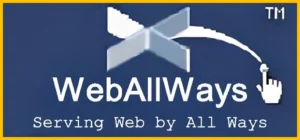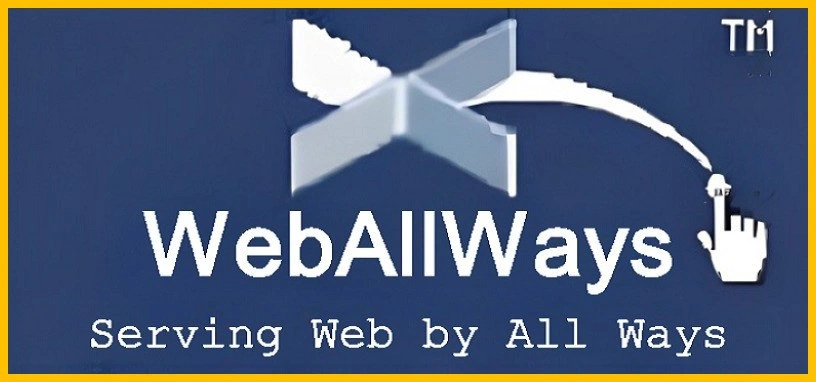
In the vast expanse of the internet, ensuring that your website gets noticed by search engines is crucial. If your site isn’t being crawled by Google, it won’t appear in search results, leading to lost traffic, customers, and opportunities. At WebAllWays, we understand the intricacies of SEO and the importance of being visible online. In this guide, we’ll explore how to get your site crawled effectively by Google, covering everything from technical setups to best practices. Let’s dive in!
Understanding Google Crawling
What Is Crawling?
Crawling is the process by which search engines like Google discover and analyze the content of web pages. Google uses bots (often referred to as spiders or crawlers) to navigate the web, index pages, and assess their relevance based on various factors.
Why Is Crawling Important?
Crawling is the first step in SEO (search engine optimization). Without being crawled, your website cannot be indexed, and therefore it won’t appear in search results. Essentially, crawling determines how visible your website is to potential visitors.
Setting Up Your Website for Crawling
Creating a Clear Site Structure
A well-structured website helps crawlers navigate your content efficiently. Use a hierarchical layout with clear categories and subcategories. Ensure that important pages are easily accessible from the homepage, and keep your URL structure organized and descriptive.
Using a Sitemap
Robots.txt: Understanding Its Purpose and How to Use It
The robots.txt file is a text file that tells search engines which pages or sections of your site they can crawl and which they should avoid. Use it wisely to prevent crawlers from accessing duplicate content or non-essential pages.
Improving Site Performance
Page Load Speed
Fast-loading pages are essential for a good user experience and are favored by search engines. Use tools like Google PageSpeed Insights to analyze your site’s performance and implement suggested improvements.
Mobile-Friendliness
With more users accessing the web via mobile devices, Google prioritizes mobile-friendly sites. Ensure your website is responsive and performs well on all devices. Consider using Google’s Mobile-Friendly Test tool to assess your site.
Secure Your Site with HTTPS
Security is essential for both users and search engines. Websites using HTTPS (Hypertext Transfer Protocol Secure) are given preference over those using HTTP. Implementing an SSL certificate not only protects your visitors but also boosts your site’s credibility.
Optimizing Content for Crawlers
Quality Over Quantity
Although having plenty of content can be advantageous, quality is much more important. Focus on creating informative, valuable, and engaging content that meets the needs of your audience. Aim for comprehensive articles that answer questions and provide solutions.
Keyword Optimization
Perform comprehensive keyword research to discover the terms and phrases your target audience is using in their searches. Use these keywords naturally throughout your content, including headings, meta descriptions, and image alt texts.
Internal Linking Strategy
Internal links help distribute page authority throughout your site and guide crawlers to discover new content. Ensure your internal links are relevant and use descriptive anchor text that indicates the linked content’s topic.
Building Authority and Trust
E-E-A-T Explained
E-E-A-T stands for Experience, Expertise, Authoritativeness, and Trustworthiness. Google looks for these qualities when evaluating content. Demonstrating E-E-A-T can improve your chances of being crawled and indexed positively.
Gaining Backlinks
Backlinks from authoritative sites can significantly boost your website’s credibility and visibility. Focus on creating high-quality content that naturally attracts links, and consider outreach strategies to do link building on reputable sources.
Social Signals and Their Impact
While social media doesn’t directly impact SEO, sharing your content on social platforms can drive traffic and engagement. Increased visibility may lead to more backlinks and higher authority, ultimately influencing crawl rates.
Monitoring Your Site’s Crawl Activity
Using Google Search Console
Google Search Console is an essential tool for tracking your site’s performance. It provides insights into how Google crawls and indexes your site, as well as any errors that may arise. Regularly check for issues and optimize accordingly.
Analyzing Crawl Errors
Crawl errors can hinder your site’s visibility. Use Google Search Console to identify these errors and fix them promptly. Common errors include 404 (Page Not Found) and 500 (Server Errors).
Keeping Track of Indexing Issues
Ensure that your important pages are indexed by Google. If certain pages aren’t appearing in search results, analyze why and take corrective action. Use the “Index Coverage” report in Google Search Console for detailed insights. If you’ve identified the issues but finding the solutions, you can read our blog on how to fix page indexing issues.
Troubleshooting Common Crawling Issues
Identifying and Fixing Errors
Regular audits of your website can help you identify and resolve issues that may be preventing proper crawling. Utilize tools like Screaming Frog or Sitebulb for detailed analysis.
Understanding Duplicate Content
Duplicate content can confuse crawlers and lead to poor rankings. Use canonical tags to indicate the preferred version of a page and take steps to eliminate duplicates.
Dealing with Crawl Budget
Crawl budget refers to the number of pages a search engine bot will crawl on your site during a specific period. Optimize your site’s structure and fix errors to ensure that your most important pages are prioritized.
Staying Updated with SEO Best Practices
Following SEO Trends
The digital landscape is constantly evolving. Keep up with the latest SEO trends and algorithm updates by following trustworthy SEO blogs and resources. Implement changes based on these trends to keep your site relevant.
Continuous Learning and Adaptation
SEO isn’t a one-time task; it demands continuous learning and adjustment. Attend webinars, take courses, and participate in SEO forums to enhance your skills and knowledge.
Conclusion
The Ongoing Journey of SEO
Getting your site crawled by Google is just the beginning of your SEO journey. It requires consistent effort, ongoing optimization, and a commitment to quality.
Final Thoughts and Recommendations
At WebAllWays, we believe that SEO is an art and a science. By following these guidelines, you can significantly improve your chances of getting your site crawled and indexed by Google. Remember, the key to success is persistence, learning, and adapting to the ever-changing digital landscape.
If you have questions or need assistance with your SEO strategy, don’t hesitate to reach out to us. Let’s collaborate to enhance your online visibility and reach your business goals!
This comprehensive guide is designed to equip you with the knowledge and tools needed to ensure your site gets crawled by Google effectively. Follow these strategies, and you’ll be well on your way to enhancing your online presence!
